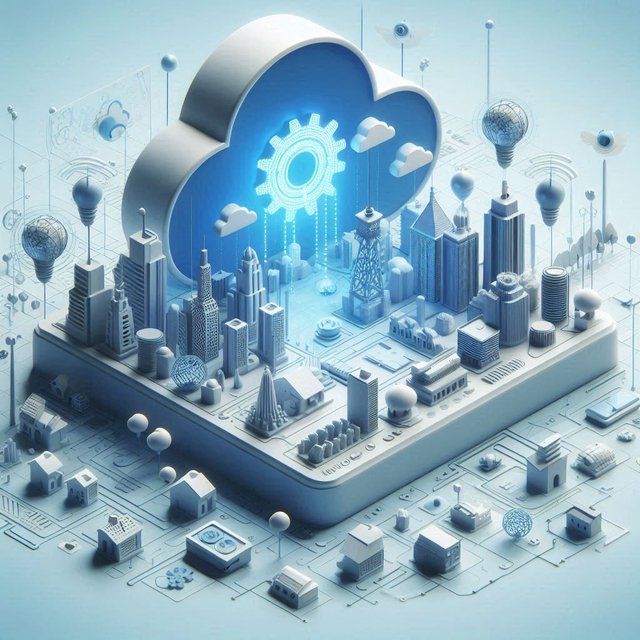
The Internet of Things has transformed machine-to-machine communication and data exchange, however, the fact that latency, bandwidth, and security issues exist is a downside. Distributed computing, fog computing, is a solution that brings computation power closer to IoT devices and thus resolves the above issues.
What is Fog Computing?
Fog computing is a distributed architecture that distributes computation, storage, and network resources across the continuum from IoT devices to cloud data centers. This type of computing that is close to the user is very useful for real-time processing, lower latency, and higher security.
Why Fog Computing is Important for IoT
❥ Low Latency and Real-Time Processing
IoT devices produce quite large volumes of data that characteristically need real-time processing eg. in smart cities, hospitals, and autonomous cars. Through fog computing, data get analyzed closer to its source, hence, the data transmission time is reduced to a minimum and the result is instant decision-making.
❥ Efficient Bandwidth Usage
The perpetual transmission of gigantic files from devices to the cloud can safely drain the bandwidth of the network. Yet, fog computing strengthens the argument by shifting data processing and filtering to the edge, thereby sending only the necessary information to the cloud, which results in the cloud being efficient with bandwidth and cutting down operational costs.
❥ Enhanced Security
Processing the data in the fog allows for the secure processing of sensitive information locally, which means that only the user has to transmit data to the cloud and not the central processors. This study is advantageous for devices that transmit data such as smart grids and devices in industrial IoT, which need to be secure and stay private.
Scalability
The increasing number of IoT devices causes strains on traditional cloud infrastructures. Fog computing grants a scalable solution by distributing computing tasks to the nearby nodes, which means that exemplary responsiveness and efficiency are sustained no matter how many connected devices are in the system.
Applications of Fog Computing in IoT
01. Smart Cities
Fog computing gives the possibility of real-time controlling supervision of infrastructural facilities like traffic management, waste management, and energy grids in urban areas.
02. Industrial IoT
With fog computing, data from various industrial sensors and machines are processed thereby enabling predictive maintenance, quality control, and process optimization.
03. Autonomous Vehicles
Fog computing is not only important for getting information from sensors but also for making autonomous vehicles' decisions in real-time.
04. Wearable Devices
Fog computing facilitates the local data process of the data from wearable devices which leads to battery life improvement and privacy enhancement.
Key Fog Computing Technologies
01. Edge Computing
One of the latest trends in computing is edge computing, which moves the processing of data near the place where they are generated, like IoT devices, and in this way helps to decrease latency and bandwidth. It boosts the capacity to make instantaneous decisions in real-time scenarios like a driverless car and a smart city.
02. Cloudlet
Cloudlet is a closer to the people cloud infrastructure. There would be the computing resources at a very local level hence instant processing of data without a connection to a faraway cloud server. This is the most important for applications that require latency to be very low.
03. Mesh Networking
This decentralized network which enables devices the direct connections to each other is highly resilient and massively scalable in fog computing.
Challenges and Opportunities
While fog computing offers significant benefits, it also presents challenges such as:
- Complexity: Fog computing makes the environment misty, an obstacle to creativity, because of its complexity which requires to be sewing the project pieces together very carefully.
- Security: Security measures that are indispensable not only for fog nodes but also for the safeguarding of personal data should be ensured.
- Interoperability: The synchronization between multi-cloud services and the devices of the manufacturers of different types in fog computing should be clearly defined.
Leading Fog Computing Providers
01. Cisco
The eminent fog computing supplier, Cisco has an implementable data services solution on the fog, which enables the different industries to process data at the network edge and thus get the real-time insights which can, therefore, help the IoT environment's efficiency improvement.
02. Intel
Intel edge computing systems are thus empowered and directed by the edge computing hardware with the ability to perform low-latency data processing that is a prerequisite for industries such as health care, manufacturing, and smart cities.
03. Dell
The fog computing, which Dell aims for, is made possible by its edge-managed infrastructure which is installed properly and thus, the businesses can process and analyze data locally.
04. Microsoft
Through Azure IoT Edge, Microsoft has decided to build a fog computing infrastructure that connects the cloud to the edge, which is a perfect fit for IoT solutions that scale easily.
05. IBM
The main focus of IBM's fog computing is the combination of artificial intelligence with edge analytics, which thus will facilitate the real-time running of IoT applications across different sectors.
Conclusion
Cloud-based IoT, through fog computing, will revolutionize and enable real-time processing, secure data transmission, and increased efficiency. The innovation of technology will give rise to the widespread adoption of diverse industries.